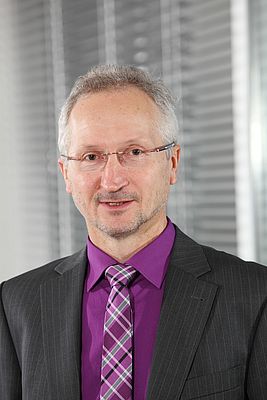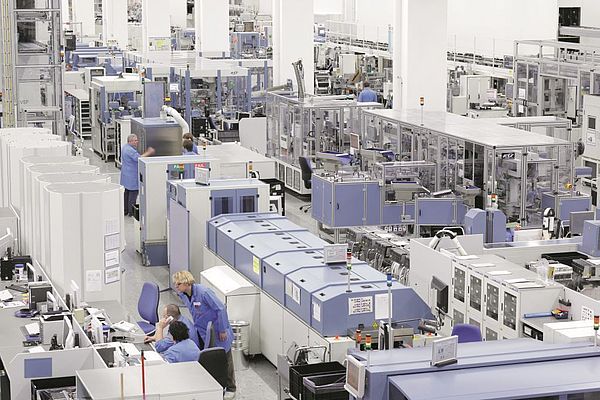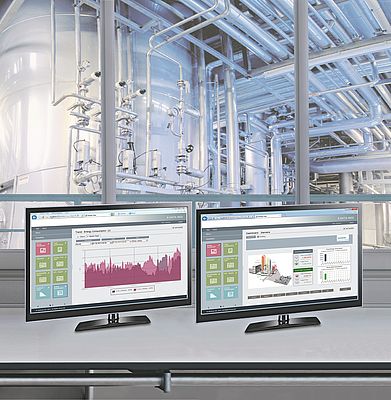What is consumed where and when? Transparency in energy consumption is a crucial requirement for increasing cost efficiency in industrial plants. Professional energy data management collects, analyzes, and evaluates information about the various energy consumers at Siemens' Amberg Electronics Plant (EWA) - and is paving the way for a comprehensive energy management system.
Wherever automatic assembly takes place, energy is used. Unfortunately, this consumption often occurs even when nothing is being produced. Infrastructure components such as compressed air, ventilation, and lighting, as well as production tools such as milling machines and robots, are often not switched off or set to standby mode during breaks. When this happens, they become "silent consumers" in production. They represent potential energy savings that are worth leveraging. That's why the assembly line at the EWA plant is now equipped with an energy data collection system that has an integrated on/off management feature.
Gradually achieving the right amount
Employees at the EWA plant have been producing Simatic programmable logic controls (PLCs) since 1989. The devices are used to automate machines and equipment in order to save time and money and increase product quality. They control a variety of operations - from ski lifts to the onboard systems of cruise ships as well as industrial manufacturing processes in sectors ranging from automobile production to pharmaceuticals. Siemens is the world's leading PLC supplier, and EWA is the company's showcase plant for these systems. Production quality is at 99.9988 percent, and a series of test stations detect the few defects that do occur. "I don't know of any comparable plant worldwide that has achieved such a low defect rate," says Professor Karl-Heinz Büttner, EWA plant manager. The factory manufactures 12 million Simatic products annually. With 230 working days per year, this means that one control unit is produced every second. Considering the magnitude of production, measures to lower energy consumption are essential. In order to identify silent consumers, special equipment to visualize individual modules was installed on the assembly line. The Amberg plant installed an automatic on/off management system to reduce the time and effort required to switch off these consumers. Stefan Ritschel, who is responsible for the pilot line, explains the principle: "The consumers are now switched off or set to standby mode during breaks. We make a distinction between whether it is a half hour interruption or a timeout period over the weekend." The modules enter the appropriate energy state for the process, which is specified by the individual responsible for the project technology.
Analyzing data and determining measures
In Amberg, more than 1,000 scanners document all of the manufacturing steps in real time and record product details such as soldering temperature, placement data, and test results. This results in the generation of around 50 million pieces of process information data each day, which is stored in the Simatic IT manufacturing execution system. "In short," explains Büttner, "we can observe every product's lifecycle, down to the last detail." Simatic B.Data automation software is used to record and analyze the energy data from Amberg. The data is transmitted via a secure connection to the Siemens Energy Service Center in Erlangen, where it is evaluated. The Amberg plant then receives meaningful energy reports via a web portal, which it can use as a foundation for concrete savings measures. Siemens' Energy Analytics offers broad-ranging, worldwide services for energy data collection, data analysis, and cost optimization. Improved transparency alone helped to identify measures that led to a more than five percent annual reduction in energy costs. But Norbert Eckl from plant layout has noticed another side effect. "Our line is certainly no heavyweight when it comes to energy consumption," he says. "But we see this as a learning opportunity." Eckl and his colleagues are demonstrating that Siemens has the methods, products, systems, and know-how to provide fundamental answers to how production can be made more energy efficient through data monitoring and analysis. "Siemens can use the knowledge we gain in the engineering of plants, and our customers will benefit accordingly," he adds. "If we are talking about the energy consumption of a welding robot in the automotive industry, for instance, our efforts really pay off."
The future of manufacturing
The Amberg Electronics Plant is an advanced example of Siemens' Digital Enterprise Platform - a production environment that could become standard ten years from now. Here, products control their own manufacturing processes. In other words, their product codes tell production machines what requirements they have and which production steps must be taken next. This system marks a further step toward the creation of Industrie 4.0. In this vision of a fourth industrial revolution, the real and the virtual manufacturing worlds will merge. Factories will then be largely able to control and optimize themselves, because their products will communicate with one another and with production systems in order to optimize manufacturing processes. Products and machines will determine among themselves which items on which production lines should be completed first in order to meet delivery deadlines. Independently operating computer programs known as software agents will monitor each step and ensure compliance with production regulations. The future of manufacturing also foresees factories that are able to manufacture one-of-a-kind products yet still remain profitable, as they will produce items quickly, inexpensively, and in top quality. In spite of its highly automated processes, EWA still relies on people for the development and design of products, production planning, and the handling of unexpected incidents - and this will not change in the future.
Energy data management: optimizing energy savings potential
The best way to achieve energy savings is to take a methodical, comprehensive approach to the question of how production can be made more energy efficient. The first step in doing so is energy monitoring. Testing identifies savings potential. The energy data management system reviews and evaluates the data to optimize energy consumption. And the final step is implementation of appropriate measures.
By Dipl.-Ing. (Univ) Engelbert Lang, Head of Energy Management, Siemens AG, Industry Sector, Industrial Automation Systems, Nürnberg (Germany)


























































